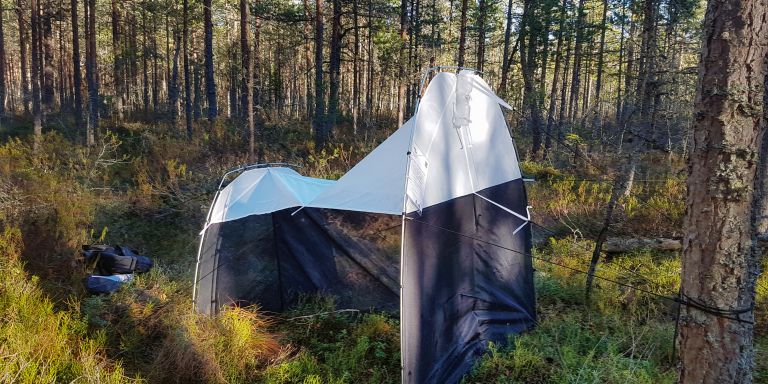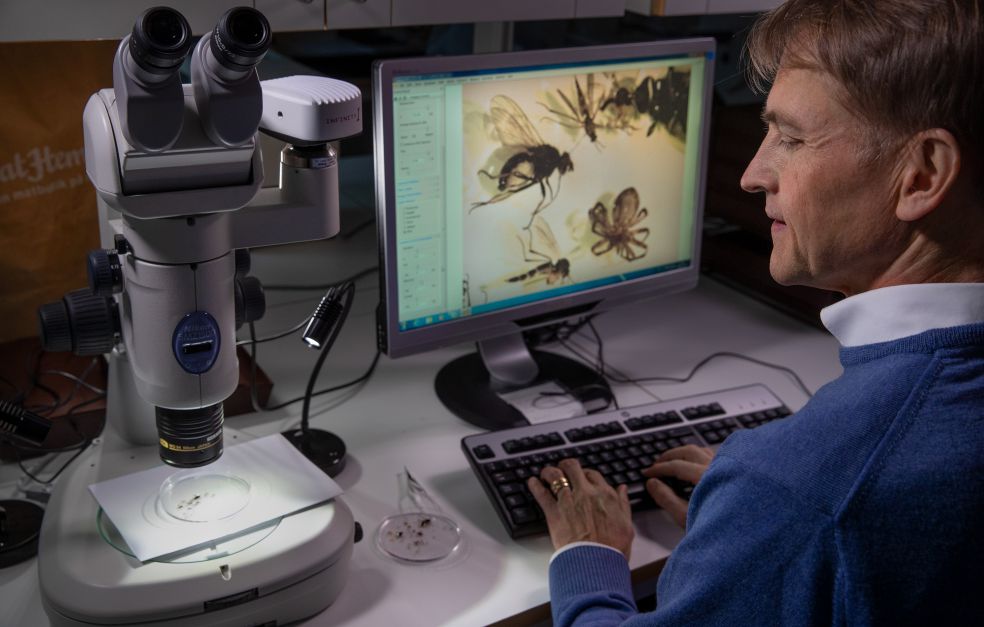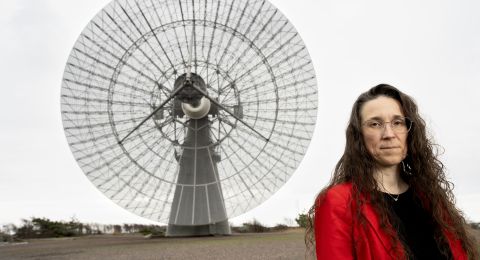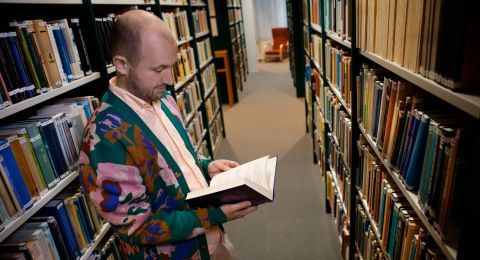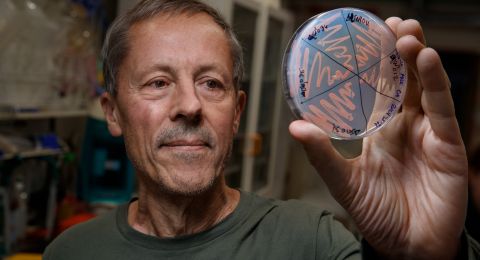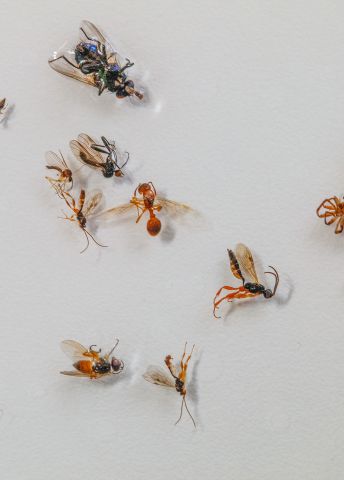
Project Grant 2017
Insect Biome Atlas
Principal investigator:
Fredrik Ronquist, Professor of Entomology
Co-investigators:
Swedish University of Agricultural Sciences
Thomas Roslin
Stockholm University
Ayco Tack
KTH Royal Institute of Technology
Anders Andersson
Institution:
Swedish Museum of Natural History
Grant in SEK:
SEK 31 million over five years
In the 1930s René Malaise, an entomologist at the Swedish Museum of Natural History designed what later became known as the “Malaise trap”, an ingenious tent-like insect trap, still used today.
“It has been refined over the years, but the Malaise trap remains the most-used collection method for insect surveys around the world,” says Fredrik Ronquist, Professor of Entomology (the scientific study of insects) at the Museum of Natural History.
The Malaise trap plays a crucial part in Insect Biome Atlas, a major project in which Ronquist’s research team is collaborating with researchers at the Swedish University of Agricultural Sciences, Stockholm University, and KTH Royal Institute of Technology. Malaise traps and DNA sequencing techniques are being used to survey insects and their habitats in Sweden and the island of Madagascar in the Indian Ocean. The geological and biological history of the two places differs enormously, which sets the scene for intriguing comparisons.
We accompany Ronquist to the laboratories in the museum’s historical buildings. This is where the collected insects are analyzed. Microorganisms living on and with the insects are also studied.
“Many people are surprised when they hear that new species are still being discovered in Sweden. We estimate that Swede has 33,000 insect species – 5,000 remain to be discovered. And there are most probably more than 100,000 species of insect in Madagascar, although only a fraction of them have been described.”
A clearer picture
The project has been made possible by a five-year grant from the Knut and Alice Wallenberg Foundation.
“…Incredibly valuable. After all, as a researcher you dream of realizing more ambitious projects. Insects make up half of our diversity of macroscopic organism species. So far we have only studied individual insect groups when we have tried to determine how natural ecosystems are composed. Now we want to obtain a much more comprehensive picture,” Ronquist explains.
It is hoped that other researchers will eventually be able to use the material to continue studying the multitude of species, how insects interact in different ecosystems, and also, for example, to identify insect-borne diseases and the species with which they are associated.
The collected data, and the analytical methods developed under the project can also be used to study environmental trends, and to predict changes in the insect fauna over time.
Help from volunteers
Collecting insects is an enormous logistical challenge. Ronquist elaborates:
“This is especially true in Madagascar – just driving around on the country roads there can be hugely challenging.”
In Sweden the project has managed to recruit 100 committed volunteers to empty the 200 Malaise traps that have been put out. The volunteers are assisted by project staff, who also take soil samples around the traps, and gather ecological data. In Madagascar an American researcher who runs a field station for insect research there is helping the project.
“We are also interested to know where the species come from, and how they have evolved. There are enormous contrasts between Sweden and Madagascar. All Sweden’s insects have colonized the country since the last Ice Age. Where have they come from? These are questions that we can answer now – to an extent not previously possible.”
Madagascar, on the other hand, has been isolated for a very long time, so the species there have instead evolved in situ, and created the fantastic biodiversity found on the island.
“In Madagascar we can find out how local the species are, when and how they evolved, and the extent to which they are unique.
Unknown Hymenoptera
Identifying insects is a hugely time-consuming business if traditional, i.e. taxonomic, methods are used. This is certainly the experience gained from the Swedish Malaise trap project, which came about on the initiative of Fredrik Ronquist and others.
“Hundreds of experts pore over microscopes, and identify the insects that have been collected. So far they have gone through about one percent of the 20 million insects collected during 2003–2006. Under the Insect Biome Atlas project, we will be able to process the same number of insects in a few weeks using the new sequencing techniques. This is a revolutionary development in our field.”
Finds from the Swedish Malaise trap project have revealed that there is much we do not know – much more than the experts had believed.
“Almost all the new species discovered are parasitic wasps, mosquitoes or small flies. These are species that provide key ecosystem services. Many of them break down organic matter, or are parasites regulating the population of other insects.
Extracting DNA
Insect DNA is sequenced at the SciLife Lab in Solna, north of Stockholm. To identify the species captured in the Malaise traps, the DNA sequences must be matched with the genetic profiles of known species. A major international project is under way to create a reference library for insect DNA sequences. Ronquist’s project will be able to benefit from that work.
“We will also learn a great deal about species that don’t match any known reference sequences. We will therefore be saving insects we have collected, so they can later be identified using traditional taxonomic methods, and describe those that are new to science,” says Ronquist.
Text Susanne Rosén
Translation Maxwell Arding
Photo Magnus Bergström
